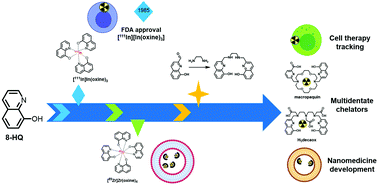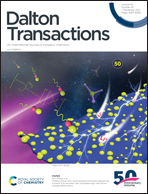Inorganic radiopharmaceutical chemistry of oxine
Abstract
8-Hydroxyquinoline (8-HQ, oxine) is a small, monoprotic, bicyclic aromatic compound and its relative donor group orientation imparts impressive bidentate metal chelating abilities that have been exploited in a vast array of applications over decades. 8-HQ and its derivatives have been explored in medicinal applications including anti-neurodegeneration, anticancer properties, and antimicrobial activities. One long established use of 8-HQ in medicinal inorganic chemistry is the coordination of radioactive isotopes of metal ions in nuclear medicine. The metal-oxine complex with the single photon emission computed tomography (SPECT) imaging isotope [111In]In3+ was developed in the 1970s and 1980s to radiolabel leukocytes for inflammation and infection imaging. The [111In][In(oxine)3] complex functions as an ionophore: a moderately stable lipophilic complex to enter cells; however, inside the cell environment [111In]In3+ undergoes exchange and remains localized. As new developments have progressed towards radiopharmaceuticals capable of both imaging and therapy (theranostics), 8-HQ has been re-explored in recent years to investigate its potential to chelate larger radiometal ions with longer half-lives and different indications. Further, metal-oxine complexes have been used to study liposomes and other nanomaterials by tracking these nanomedicines in vivo. Expanding 8-HQ to multidentate ligands for highly thermodynamically stable and kinetically inert complexes has increased the possibilities of this small molecule in nuclear medicine. This article outlines the historic use of metal-oxine complexes in inorganic radiopharmaceutical chemistry, with a focus on recent advances highlighting the possibilities of developing higher denticity, targeted bifunctional chelators with 8-HQ.

- This article is part of the themed collection: 2021 Frontier and Perspective articles


 Please wait while we load your content...
Please wait while we load your content...